- leun's home page
- Posts
- 2013
- 2012
- December (2)
- October (3)
- September (2)
- August (1)
- July (4)
- June (4)
- May (2)
- April (3)
- March (5)
- February (5)
- January (5)
- 2011
- December (3)
- November (3)
- September (5)
- August (2)
- July (2)
- June (3)
- May (4)
- April (4)
- March (2)
- February (4)
- January (2)
- 2010
- December (2)
- November (3)
- October (3)
- September (5)
- August (6)
- July (2)
- June (4)
- May (3)
- April (4)
- March (4)
- February (2)
- January (4)
- 2009
- 2008
- October (1)
- My blog
- Post new blog entry
- All blogs
Pythia Jet Forward
Does Pythia produce real jets in the forward region?
This page summarized what I've found out about forward jets in Pythia so far.
I started out with an aim to look at the jet structure in simulation, and more specifically to see what an isolation cut can do for a charged hadron looking like a direct photon. However, the result of full simulation showed that I had unusually high fraction of events that had completley isolated hadrons in the FMS with no track around it. I chased after this thinking that it was a bug in my code, and while I did manage to fix a few minor issues as a result of this quest, I came to the conclusion that these events really do have isolated hadrons from Pythia.
So I generated a larger sample of Pythia events, and without pushing them through GSTAR, I studied what the "jets" look like. To make a comparison, I saved jets not only in the forward region, but also in the central region.
I used Pythia 6.4 + Perugia0 + <kT>=1.GeV. I also checked Pythia 6.222 with a smaller sample, but I did not see any meaningful difference.
Event cuts are the following.
1. A pion, an eta, or a prompt photon with E>20GeV (for forward) or pT>3GeV (for central) is our "seed".
2. Pseudorapidity of the seed particle has to be from -4.2 to 4.2.
3. A "jet" is considered "hard scattered" if the seed particle is within R=1.0 in eta-phi of any of the two final state particles from the hard scattering, before or after the final state radiation. No condsideration is given to the energy and momentum. I only look at the events passing this cut.
4. The jet cone radius was set at 0.7 in eta-phi to make sure I catch everything (and then some).
At the end, there seems to be some issue with my logic that prevents double counting of a particle wihtin a jet. This seems to affect mostly the eta-meson, so I removed all "jets" whose seed was eta even though only a small fraction of them have this issue.
Mid-rapidity: abs(seed particle eta) < 1.5
Forward: 3.0 < abs(seed particle eta) < 4.0
Fig. 1. Track multiplicity (minus one) in jets vs. jet energy
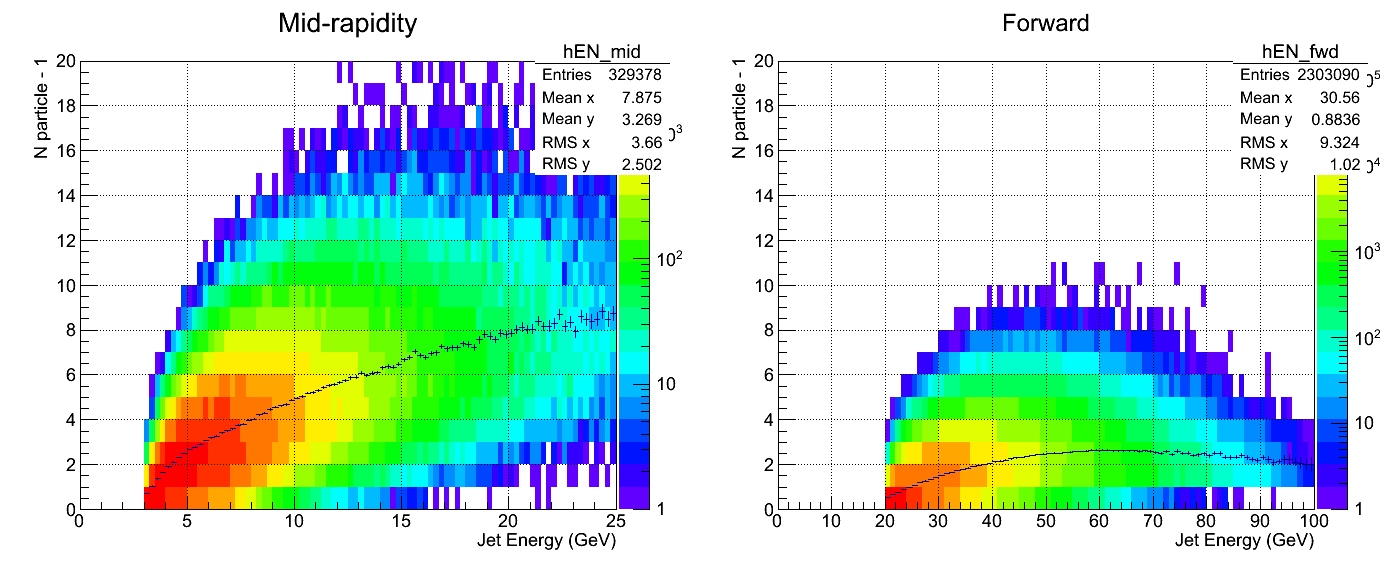
Clearly, the multiplicity for forward "jets" is much smaller than for the midrapidity jets. Also, for the forward "jets", the multiplicity does not increase as a function of jet energy after E(jet)>50GeV.
Fig. 2. Track multiplicity (minus one) for all jets (projection of figure 1)
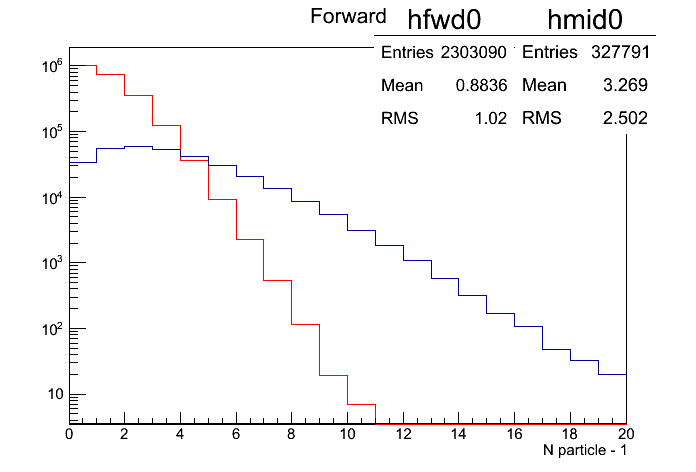
So for midrapidity, it's 3.2+1 ~ 4 tracks per jet. For forward, it's 0.8+1 ~ 2 tracks per "jet". This plot also tells us that if I look at a 20GeV particle in the forward region without any other condition, the most likely number of tracks around it is zero. For midrapidity, for a pT=3GeV particle, it is 2.
Fig. 3. Track multiplicity (minus one) for jets with E > 2*(seed energy cut): E>6GeV for midrapidity, E>40GeV for forward.
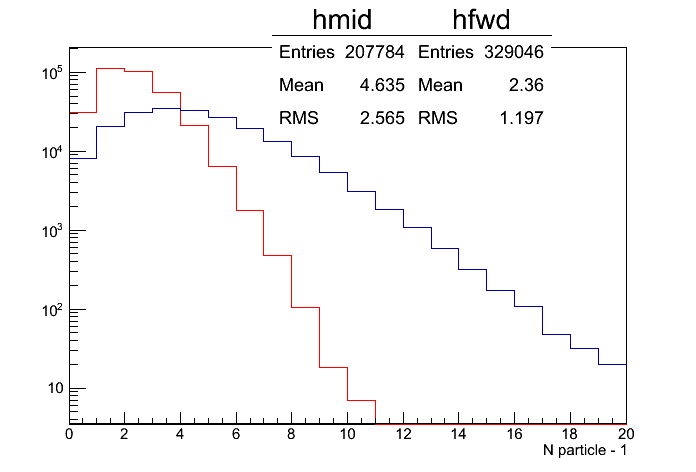
Next we look at the ratio of energies between the final state parton associated with the jet, and the jet itself.
Fig. 4. E(jet) / E(parton) vs. jet energy
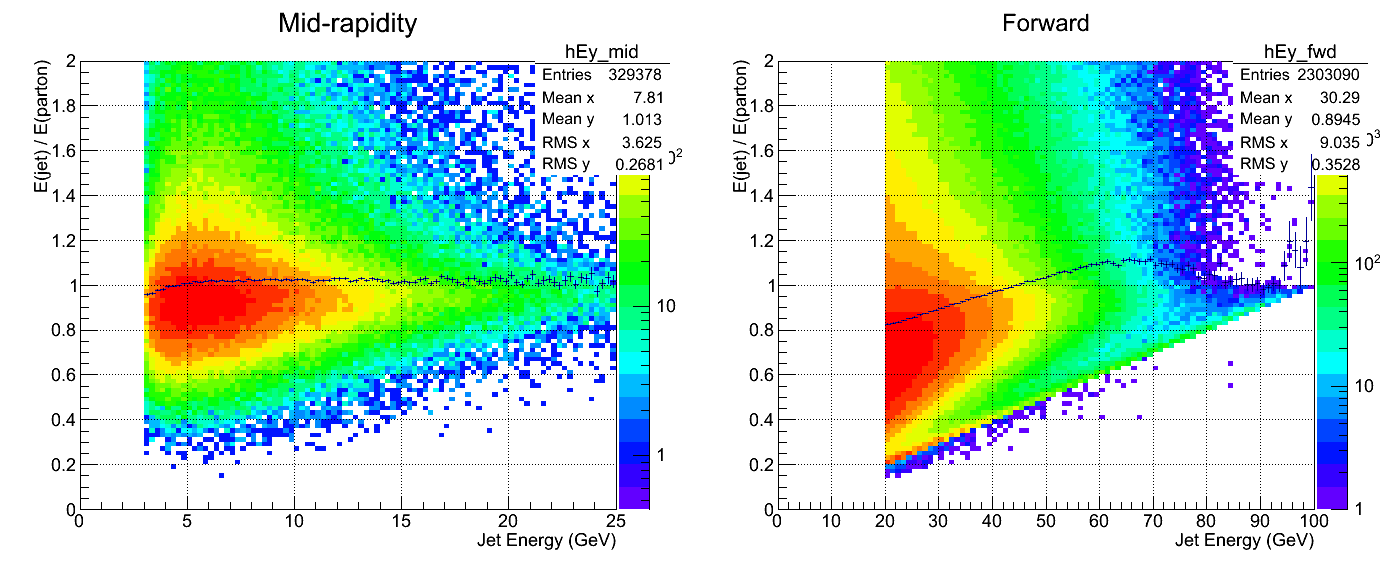
Midrapidity looks like what it should look like. Forward very much does not look like jets coming from these partons, although there does seem to be some proportionality between the two.
Fig. 5. The fragmentation fraction (z) vs. jet energy
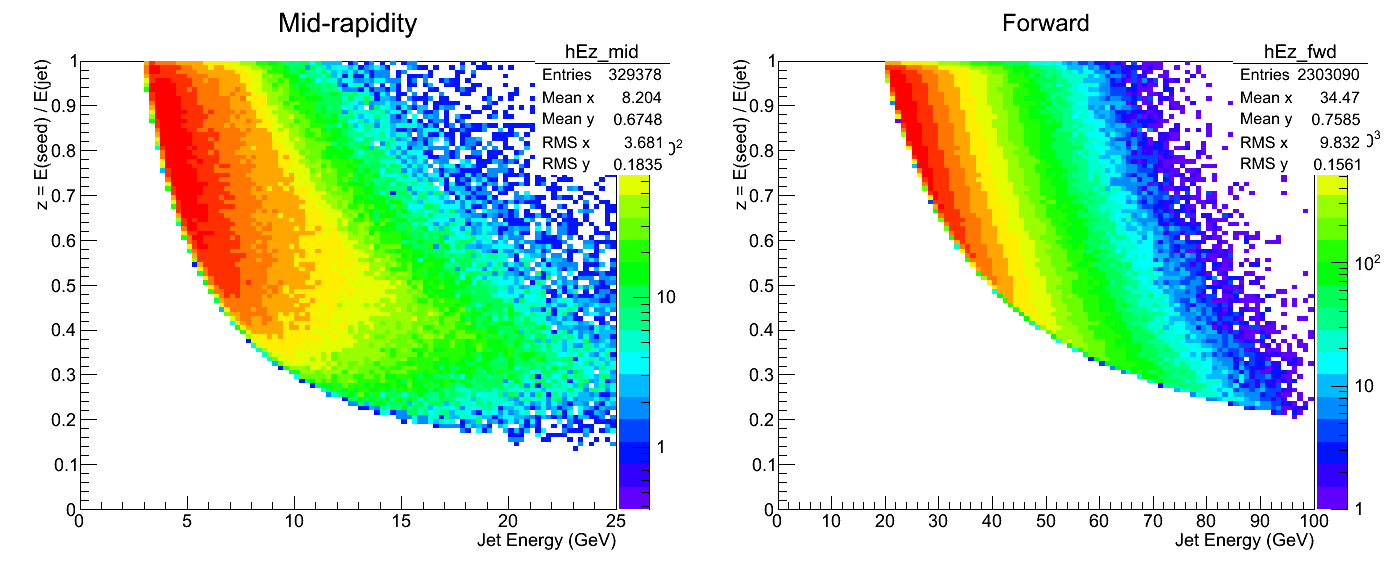
For midrapidity, the z distribution is fairly broad, and after certain point is also developes a (wide) peak. For forward, the most probable value is always at the boundary set by the seed energy > 20GeV condition.
Fig. 6. Average energy of non-leading track vs. jet energy

The "lines" that appear in the ditribution for the forward rapidity correspond to Ntrack=1, 2, 3, etc. While this is a bit tricky to interpret, I think these plots suggest that the forward "jets" in Pythia are not really jets at all. For example at E=50GeV, we have a seed particle E>20GeV, so we need 30GeV or less to make up the "jet" of this energy. We see that the most likely scenarios are either 1x30 GeV particle, 2x15GeV particles, 3x10 GeV particles, etc, while the eed particle energy is almost exactly at 20GeV. This looks a lot like mixing and matching independent particle spectra, rather than what a jet should do.
So at this point, I do not understand what Pythia is doing in the forward region. It seems to me that unless we can figure out what's going on, the value of any forward simulation will be very limited for anything other than inclusive measurements.
- leun's blog
- Login or register to post comments
